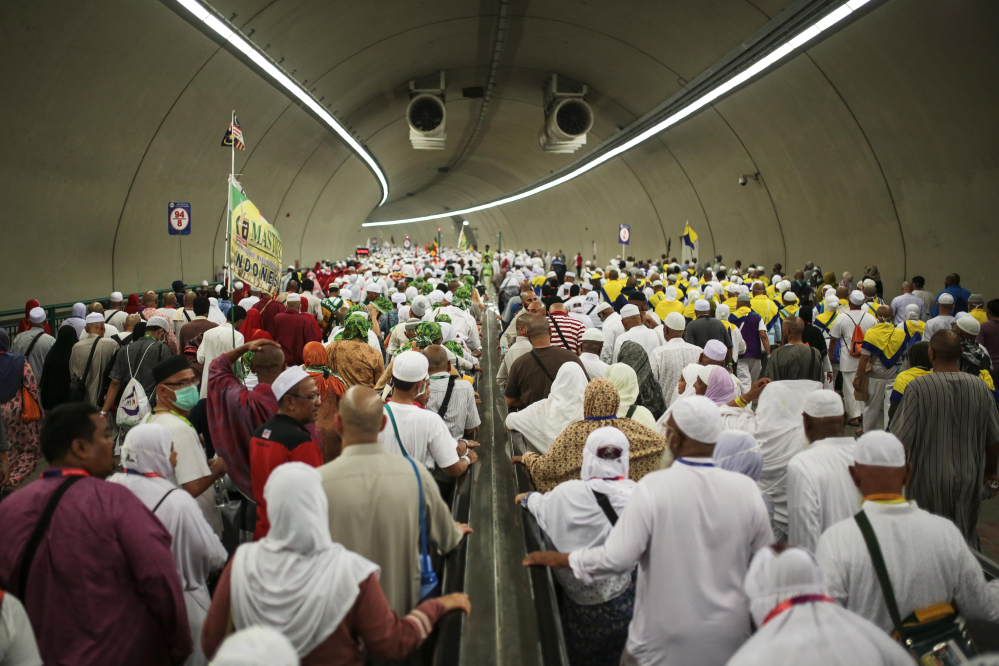MINA, Saudi Arabia — As the hajj religious pilgrimage entered its final day Saturday, officials in Saudi Arabia continued to grapple with the aftermath of a collision of pedestrian crowds that killed at least 719 people from various nationalities.
India’s government raised its estimated death toll for Indian citizens from 14 to 18, while Pakistan raised its estimated death toll from eight to 11.
Meanwhile Iran, whose citizens comprised the largest number of fatalities confirmed so far, announced in a state TV broadcast that among those Iranians still missing are Ghazanfar Roknabadi, a former ambassador to Lebanon, as well as two Iranian state TV reporters and a prominent political analyst. According to the TV report, 134 Iranian pilgrims died and 85 were injured in the Thursday incident, while 354 Iranian pilgrims remain missing.
Iran has strongly criticized archrival Saudi Arabia over the disaster, blaming the Saudi government for “incompetence” and “mismanagement” of the annual hajj – which draws about 2 million pilgrims per year from more than 180 countries.
Pilgrims on Saturday steadily streamed into Mina’s Jamarat, a multi-story complex built by the kingdom with crowd-monitoring technology and wide ramps for large crowds to perform the final rites of the hajj. Muslims believe the devil tried to talk the Prophet Ibrahim, or Abraham as he is known in the Bible, out of submitting to God’s will in Mina. In one of the final steps of the hajj, pilgrims throw stones at three large pillars here in a symbolic casting away of evil.
Saudi security forces were on hand to spray pilgrims with water to help to keep them cool as temperatures reached 100 degrees. Large fans also sprayed water mist to keep the hundreds of thousands of pilgrims performing their hajj rites from over-heating.
Three Saudi officers from the emergency police force at Jamarat were seen attending to a pilgrim who appeared to have suffered from sunstroke.
Sudanese pilgrim Abdullah al-Muzbahi, 42, stood to the side on one of the floors in Jamarat, with his hands stretched in supplication and prayer, after completing the stoning ritual. He said that from his perspective, this year’s hajj went smoothly and that Saudi officials appeared to be doing all they could to safely manage the pilgrimage.
“The problem is in the culture of pilgrims, who are not organized or patient,” he said.
Saudi pilgrim Misfir al-Yami, 28, said the large crowds should be directed better to reach certain holy sites in smaller waves. He said it is the responsibility of both the security forces and the pilgrims to ensure the hajj is safe.
In the worst hajj disaster in a quarter century, at least 719 people were crushed or trampled to death, while 863 were injured when two huge waves of pilgrims converged Thursday on a street near a religious site in Mina. That followed an accident Sept. 11 in which a storm toppled a crane at the Grand Mosque in Mecca, killing 111 people.
Iranian President Hassan Rouhani, in New York for the U.N. General Assembly, questioned whether the Saudi government could be trusted with the responsibility of overseeing the hajj. Rouhani told a group of editors Friday that both the stampede and the crane collapse suggested “ineptitude” on the part of Saudi authorities, and that they could be viewed as “not sufficiently responsible to be hosting” such large groups of people.
Hassan Nasrallah, leader of Lebanon’s Hezbollah group and a close ally of Iran, said the Saudi government bears the responsibility for the accident. He called for the countries with the most victims, such as Iran and Morocco, to participate in the investigation to ensure that there is no cover up by the Saudis.
The repeated nature of these incidents “means there is malfunction in the administration,” Nasrallah said in an interview Friday on Hezbollah’s Al-Manar channel. “They say they want an investigation, so we call that at minimum there must be delegates from the countries with many victims in this accident.”
Syrian pilgrim Samar Zaki, 37, said she is thankful she was able to perform the hajj at a young age. She said there were times when she was in the midst of very large crowd that she worried for her safety.
“There are times when it is challenging,” she said. “I saw (news) about the accident that took place and it made us all very upset.”
Send questions/comments to the editors.



Success. Please wait for the page to reload. If the page does not reload within 5 seconds, please refresh the page.
Enter your email and password to access comments.
Hi, to comment on stories you must . This profile is in addition to your subscription and website login.
Already have a commenting profile? .
Invalid username/password.
Please check your email to confirm and complete your registration.
Only subscribers are eligible to post comments. Please subscribe or login first for digital access. Here’s why.
Use the form below to reset your password. When you've submitted your account email, we will send an email with a reset code.